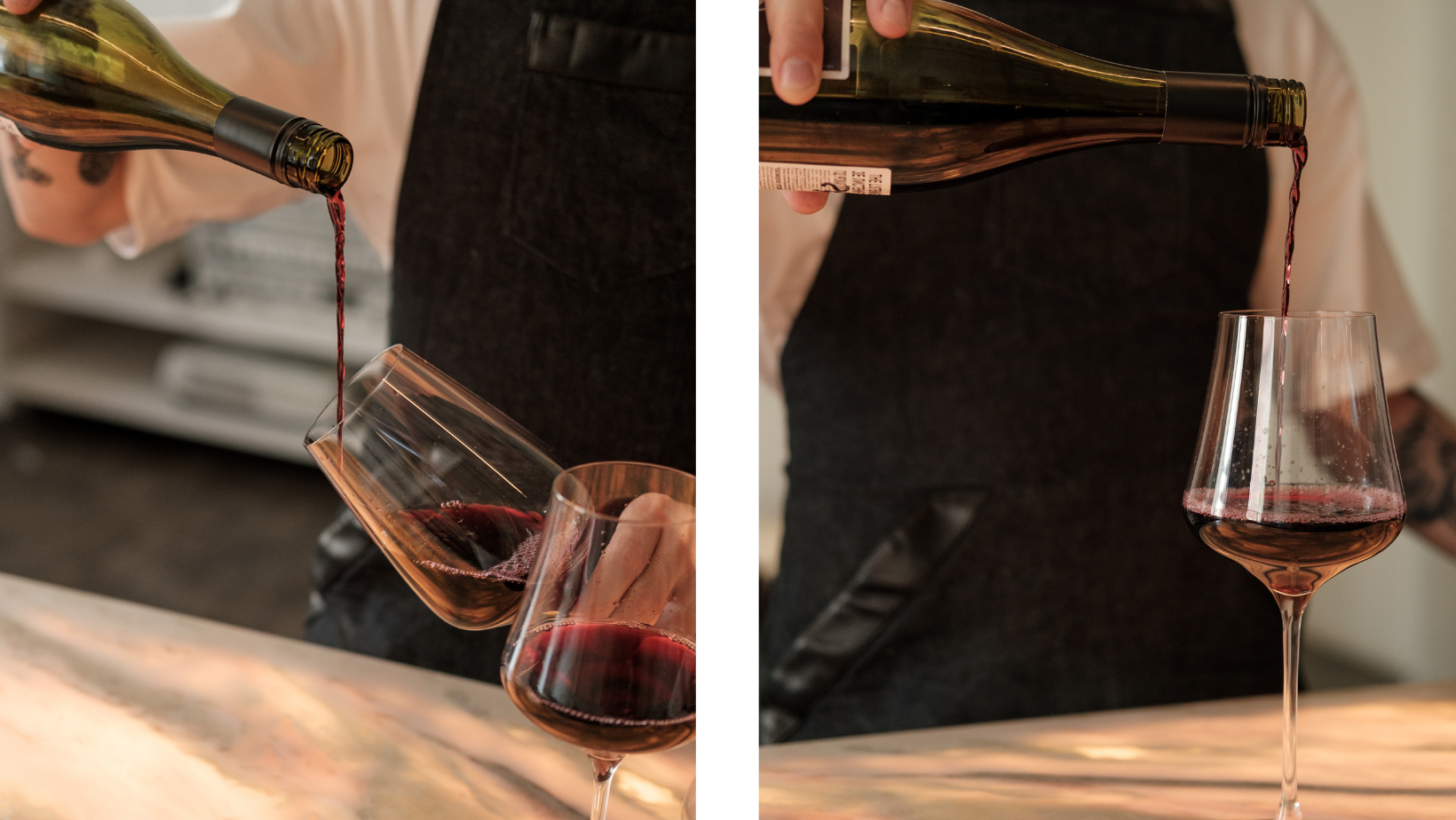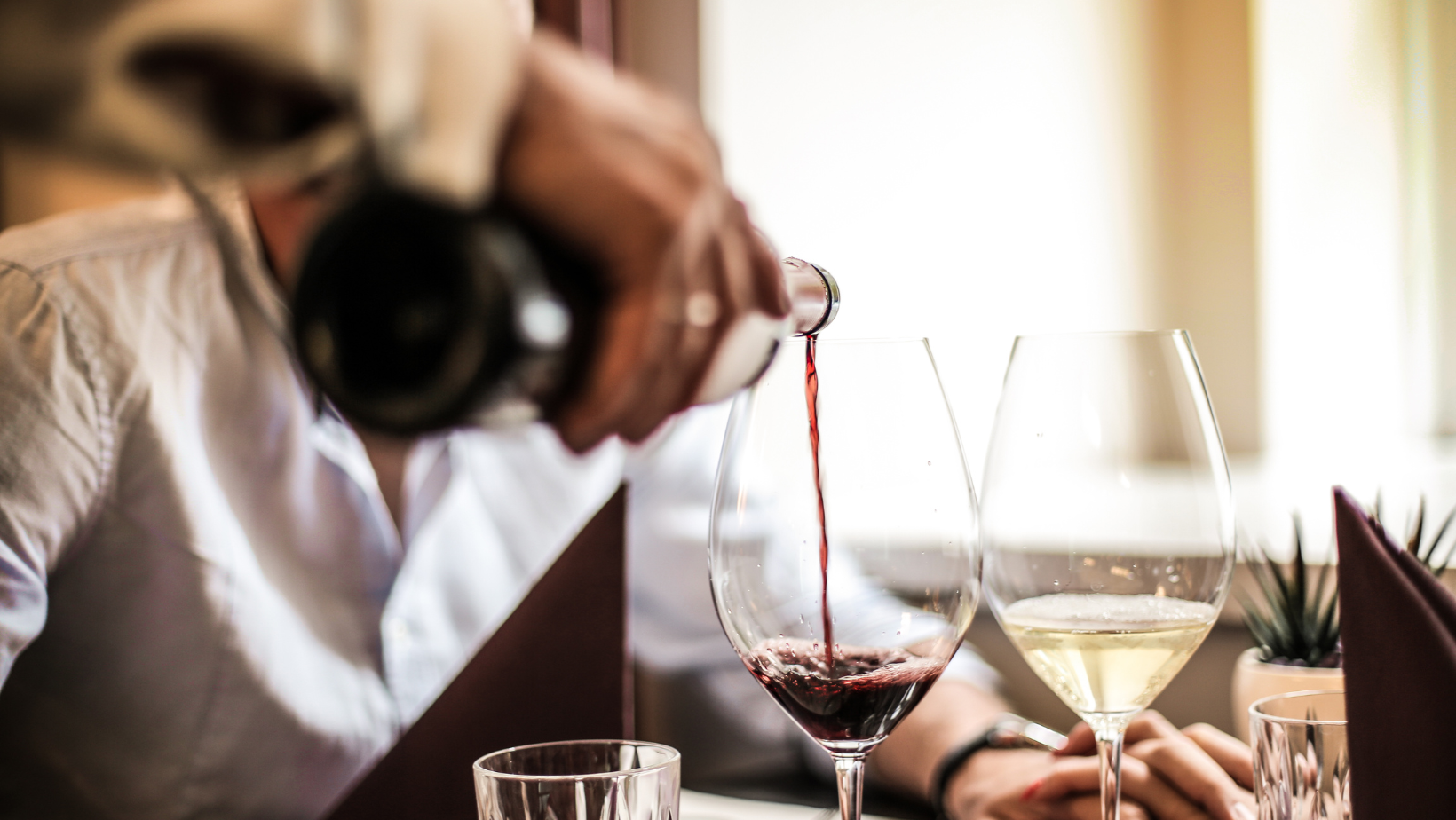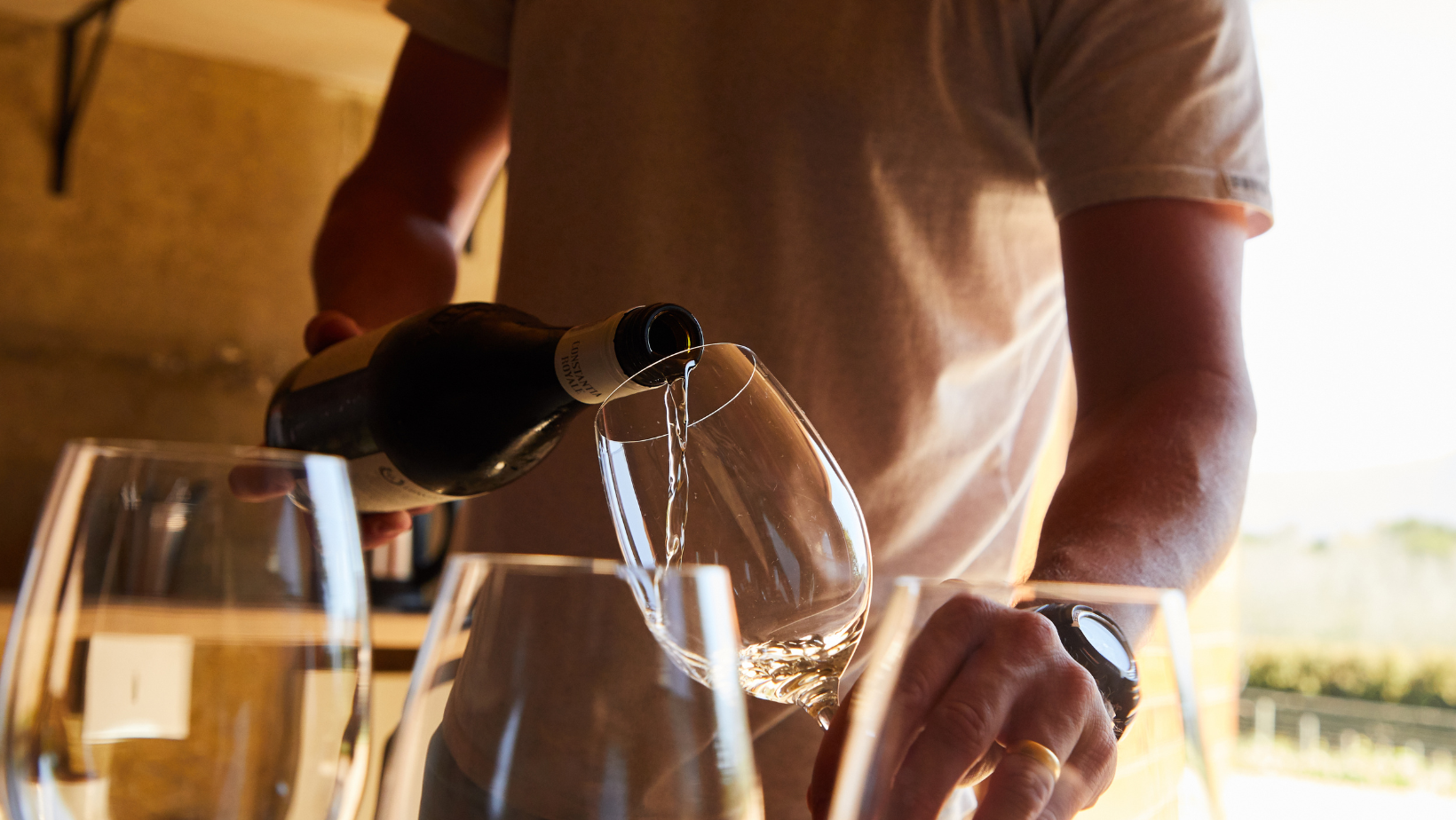Should I tilt the glass when pouring wine?
Some people do it, some don’t. Which of the two actions is right? During our experience in restaurants and wine tastings we have seen different situations: there are those who tilt the glass slightly when pouring wine and those who, instead, hold the glass straight, in a vertical position. What do you do? Do you tilt it or hold it straight?
The answer is not easy or obvious. You should know that this aspect of service is one of the most debated in the world of wine. Many people wonder what to do: is it correct to tilt the glass when pouring wine? How to hold the glass when serving wine? Straight or tilted?
Let's see the rules of Wine Etiquette. Take a few minutes of your time to read our article. You will discover, in detail, what you should do in these cases.
Should the glass be tilted when pouring wine?
According to the rules of Wine Etiquette, the answer to our question is the following:
no, the glass should not be tilted when serving and pouring wine. The glass should be held upright, in a vertical position, strictly on the table.
Why is it better to hold the glass upright when pouring wine? Why shouldn't the glass be tilted?
The answer to these questions is the following:
the glass should be in a vertical position when serving wine because this position is more practical/functional and elegant.
Holding the glass upright allows you to have better control over the flow and amount of wine poured. This way, you can pour the right amount of wine with precision and can prevent the wine from spilling out of the glass. With the glass tilted, the risk of spilling is greater.
Wine etiquette considers the action of tilting the glass less sober and less elegant than that of leaving the glass in its natural position. As in, if it is not necessary to tilt the glass, why do it? It is better to avoid any non-functional action.
With long-aged wines tilting the glass during service is to be avoided. These are very delicate wines, which require small doses of oxygen to bring out their aromas, but this oxygenation must be kept under control to avoid excessive wine-oxygen contact. By tilting the glass, a greater quantity of wine is exposed to oxygen. Excessive contact can have negative consequences on the organoleptic properties of the wine.
But why, in some cases, do sommeliers also tilt the glass? Because, with certain wines, tilting the glass can be useful ...
With which wines can I tilt the glass when pouring them?
Wine etiquette suggests serving wine without tilting the glass with all types of wine. It would be enough to serve wine with the utmost care and delicacy.
However, there is a specific type of wine that is often served by tilting the glasses. These are sparkling wines.
Why do some people tilt their glass when pouring sparkling wine? Some people tilt the glass when pouring sparkling wine to control the foam formation, to prevent excessive foam and to avoid the foam spilling out of the glass.
With the glass in a vertical position, the force of the impact of the wine on the bottom of the glass increases. This impact leads to a rapid release of carbon dioxide, typically contained in sparkling wine and to the uncontrolled formation of foam.
The foam can spill out of the glass, carrying away the wine's aromatic compounds. By tilting the glass, the pouring process becomes "gentler" and the impact of the wine against the “walls” of the glass is more “delicate”.
In any case, by controlling the flow of the sparkling wine from the bottle and pouring the sparkling wine very slowly to make the impact of the bubbles on the bottom more delicate, you can safely hold the glass upright.
If you liked our article and if you want to continue to receive news, updates and curiosities about the world of wine, subscribe to the Wineshop.it wine newsletter. Lots of content and offers await you!











